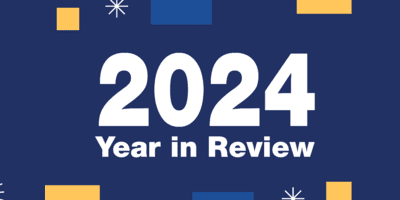The Top Five User Experience Strategies for Small Law Firms
Create an informative and Engaging Website
The digital world has opened a host of new opportunities to promote and build the business of your law firm. Certainly, foremost is having a website, but how your site is designed, the written content, and visual components such as graphics and video all contribute to how people searching for your legal services will find you.
Your homepage is the visitor’s first impression and it’s important that it capture their interest within a few seconds to entice them to explore your site further. Good design, white space, font selection, and color schemes are all important, but content is king. A visitor to your website wants to know if and how you can assist with their legal issue. A headline, with perhaps a sub-headline and two to three lines of text should give them a memorable and concise summary of the services you provide.
Your practice specialty or specialties should be clearly defined in a few words, or with an image, or both if appropriate. A broader and more detailed summary of your expertise should be reserved for another page. Avoid overloading your homepage with too much information as it can create confusion. If a visitor cannot find a link to additional information easily, they will likely move on to another site.
Your company logo should appear prominently at the top of the home page. Your navigation feature should be clearly marked and well-defined as to the additional content on your site, making it easy for your visitor to explore further, but also give them a quick overview as to what type of information is available. A call-to-action is another key component of the home page, with two different links in two locations on the page to catch their attention.
Additional pages of your website should tell a story, about you, your practice, your expertise, and your successes. Frequently Asked Questions or FAQ’s are key to answer likely questions your prospective clients may have and are also beneficial for Search Engine Optimization (SEO).
Graphics such as images, photographs, videos, graphs, or drawings should also be components of your webpages. The saying “A picture is worth a thousand words” is very applicable to websites, making them more visually appealing, breaking up blocks of text, and creating an emotional connection or imparting significant data.
How do you know if your website is working for you? If you are not already using it, Google Analytics is a free service which will give you important insight into what is working on your website and what isn’t.
It measures traffic to each page and reflects the content that is of the most interest to visitors, how long they’re spending on an individual page, and how visitors found your website in the first place. It can tell you the geographic locations your traffic is coming from and what search engine they’re using. If you’re already doing online advertising, Google Analytics will identify which keywords are pulling the best results. It will also provide data on operational issues such as site speed and how long it takes for a page to load.
Increase Traffic with Search Engine Optimization and Key Word Utilization
What types of content in your website will increase the likelihood that your site appears in the search results? The pages on your website should be optimized with keywords and meta tags. Search engine algorithms evaluate the content of webpages to determine whether the page contains information that might be relevant to what the searcher is looking for. The most basic signal that information is relevant is when a webpage contains the same keywords as the search query. If those keywords appear on the page, or if they appear in the headings or body of the text, that information will be determined to be relevant. Of increasing importance to search engines today are descriptive key phrases, known as long-tail keywords.
Meta tags don’t appear in the actual text of your website, but rather they are short snippets of text that are placed in the source code of each page. While there are several types, the most important and most often utilized is the title tag, and secondly, the meta description attribute. A title tag has a direct impact on search rankings, while a meta keyword or tag is a 155 to 160-character summary of the webpage included in the HTML of your website. It will show up in the search results if it includes the keywords that are being searched, and while not a ranking factor, meta tags can contribute to the clickthrough results which in turn can enhance your SEO rankings.
Since search engines cannot “read” images, graphics should have an alternative text tag so that they are included in the components utilized by the search engines. Alt text is also an important element of accessible web design for visually impaired readers.
But beyond the verbiage and images, there are many other factors that also contribute to good search results including functionality such as how fast a page loads, whether a website is easy to view on multiple types of devices, the relevance of your content to the words used in the search query, and even the previous results the person searching has already clicked on.
Consider engaging a professional SEO company to first evaluate your site, and then optimize it to improve your firm’s standings in search results by prospective clients. You may also want to consider a paid campaign of Pay Per Click (PPC) advertising. You should also take advantage of the free exposure that comes with registering your firm on Google My Business, Yelp, LinkedIn, Yahoo, Microsoft, and MSN. When posting your firm’s information, make sure it is identical across all directories.
Generate Traffic with an Informative Blog
Though it requires an investment of time and energy, having a blog and contributing frequently is an important professional and marketing tool. According to an AM Law 200 Blog Benchmark Report in 2015, blogging has become a staple in the majority of firms with over 80% of AM Law 200 firms regularly contributing to at least one active blog. Blogs may be even more essential to the sole practitioner or smaller firm as they provide the perfect forum to showcase your expertise and insight into issues relevant to your practice area or your community. Blogs postings do not need to be lengthy and getting into the habit of writing down your thoughts on a topic can help improve your communication skills. If you are active in social media, posting your blog will expand the reading audience and add credibility to your profile. And if YouTube is part of your social media toolbox, consider making videos using the theme of suitable blog postings to broaden the audience. Perhaps most important, new content that is updated regularly is an attractive draw to search engines.
While having a presence on the internet with a website has become essential for a business, social media has also emerged as a viable resource for promoting one’s business. There are numerous platforms – Facebook, LinkedIn, Twitter, Instagram, Pinterest, Snapchat, and YouTube – and Business News Daily estimates that about 70% of Americans are on social media.
From simply a professional standpoint, LinkedIn makes the most sense for attorneys as it is considered the “benchmark for professional networking social media platforms.” It provides a medium for you to connect with peers who can be a source of referrals, and potentially also new clients. If your website includes a blog, which it should, you can publish your blog posts on your LinkedIn profile, which can lead to them being shared and broadening your exposure, reputation, and network. You can also join groups that share personal interests or topics relevant to your practice and contribute to conversations which can also be helpful to your business.
If you choose Facebook as a social media vehicle, you need to have a personal profile first and then you can see instructions for creating a Facebook business page. From there, you can create an about page, post articles, blog postings, and information on events or seminars you might be hosting. Clients can post testimonials to your handling of their case, photos or videos. While perhaps not suitable for all practices, a search for legal issues such as surrogacy, estate planning, drunk driving defense, sexual harassment, or personal injury can often start with inquiries to friends or colleagues for recommendations.
Twitter has also become a mainstay in the wheelhouse of many professional organizations to build their brand and company profile. As with other social media platforms, the benefit here is not only setting up your own Twitter feed, but also engaging with other users to see their posts and contents, and with over 300 million monthly active users, the knowledge and content pool is vast. While some people use it simply for information gathering, if you decide to be a contributor, keep your tweets professional in nature, providing quality commentary on issues that are relevant to legal issues related to your practice or information that would be of interest to a broader audience.
If you use videos on your website, then YouTube is a logical social media vehicle to share that video to a broader audience. However, if you choose YouTube as a marketing tool, optimum best practices are to post a video regularly – once per week or every two weeks – with varying topics of interest to your target audience. While it does not necessarily need to be professionally done, keep in mind the image you want to portray and make sure that the video and sound are both of high quality.
Also consider registering as a source with Help A Reporter Out. Media outlets are often looking for third party legal analysis for background information and quotations on stories they are writing. Queries are sent by reporters and media outlets from around the world via email three times daily at 5:35 am, 12:35 pm, and 5:35 pm EST. If a topic falls within your area of expertise, you can contact the reporter through the email address provided with the source request and provide a relevant response and a short bio. If you are selected to be interviewed, the article, television clip, or radio story can then be posted on your website, adding tremendous value to your reputation as an expert in your field.
Contact Our Team
Don’t know where to start or can’t find the local talent you need to launch your new digital masterpiece? Let our team of experienced professionals help you map out your next project or fix an existing one that needs attention.




Leveraging Social Media Marketing for your Law Firm